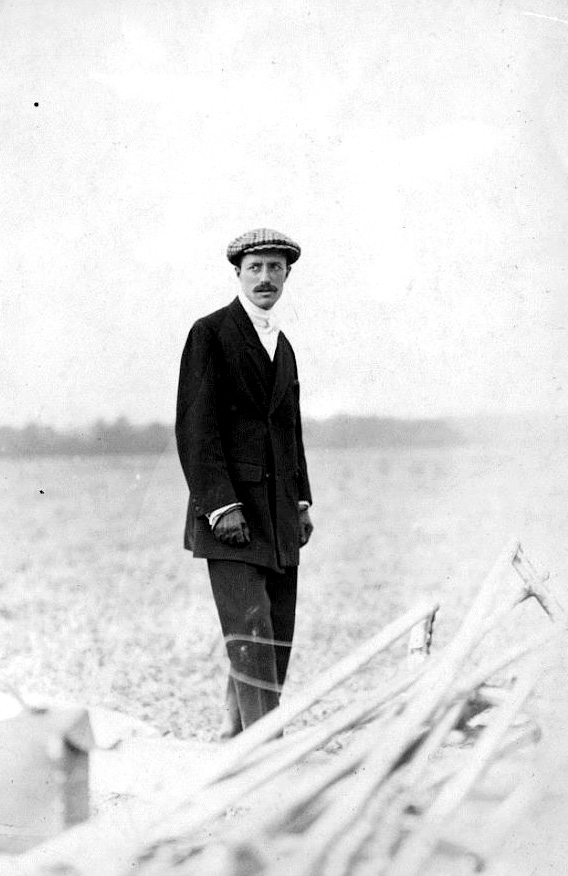Up in the Clouds
Jacques de Lesseps was a war hero, an international aviation pioneer and a celebrity. Yet, his tragic story here on the Gaspe Coast has often been forgotten in the pages of our past.
Jacques was born in Paris on July 5th, 1883, in a large and influential family. His father Ferdinand De Lesseps was a French diplomat, and his father had been made a count by Emperor Napoleon Bonaparte. Ferdinand was known for his role in building the Suez Canal, which in 1869 joined the Mediterranean and Red Seas and substantially reduced the sailing distance between Europe and East Asia. He was also the man who, as head of the Franco-American Union, formally presented the colossal Statue of Liberty to the United States in 1884.

Ferdinand was married twice, and it is said that he had 17 children, although not all of them survived. In 1837, he married Agathe Delamalle and had five children. After she died, he married his second wife Louise-Hélène Autard de Bragard and had 12 children. Therefore, Jacques de Lesseps grew up in a large prominent family and he was only 11 when his father died in 1894, at the age of 89 years.
He spent most of his childhood on Avenue Montaigne, which was one of the most elegant streets in Paris. At an early age, he became interested in aviation. In 1903, the Wright brothers, Wilbur and Orville made history with their Kitty Hawk Flyer and proved that human flight was possible.

In France, Louis Bleriot followed the lead of the Wright brothers and built a monoplane. In 1909 he became a national hero by flying his plane from France to England across the English Channel.

It was during this time that Jacques de Lesseps enrolled at the Issy-les Moulineaux flight school in the suburbs of Paris where he obtained his pilot's license in January 1910. He was a brilliant student and became the first aviator in the world to fly and land at night. In March of that same year, he managed to get one of the first Blériot XI planes, which he named Le Scarabée. He was then able to duplicate his tutor’s feat by being the second person to fly across the English Channel. This exploit brought him to the public's attention, and he soon became an aviation hero in Europe.

Later that year he was invited to participate in the first International Air Force Congress in Montreal. So, he crossed the Atlantic Ocean on a ship with his two Blériot planes, and on July 2nd, he made the first flight over the city in Le Scarabée. This spectacular accomplishment made him a hero in Canada.

When he was in Toronto, Sir William MacKenzie, who was a rail magnate and cofounder of the Canadian Northern Railway invited Jacques de Lesseps to his home. It was there that he met his daughter Grace and before leaving he invited her and her two sisters to New York.
In October 1910, he was the first pilot to fly over the Statue of Liberty, which had been inaugurated by his father in 1886 in the presence of U.S. President Grover Cleveland. He asked Grace to accompany him on one of his flights while she was there so that he could show her the city from the air. She did and became the first Canadian, if not the first woman in the world, to fly in a plane. When Sir William in Toronto found out that his daughter had flown with de Lesseps, it is said that he sent a telegram telling her to come home at once.
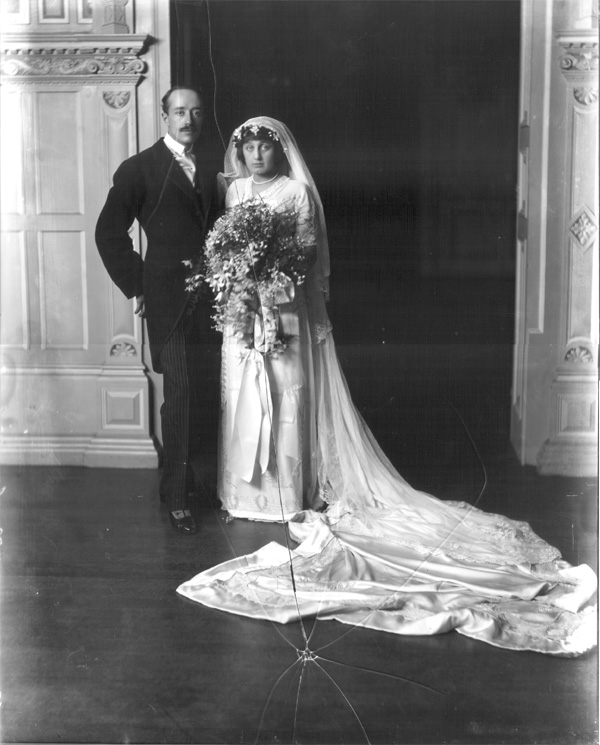
When he returned to Toronto, he asked Grace Mackenzie to marry him, and their wedding took place in London in January 1911. They then travelled to Egypt where they sailed on the Suez Canal.
They later moved to Paris where they had four children
When the war started in 1914, it disrupted the life of the young family. During the conflict, Grace volunteered as a nurse for the French army and Jacques served his country as an aviator. Flying mainly at night, he defended Paris against attacks. He also carried out 95-night bombing missions, in addition to photographic and reconnaissance flights. He became a war hero and received eight citations for bravery, the Croix de Guerre, and the Knight's Cross of the Legion of Honor. The Americans also award him the Distinguished Service Cross.
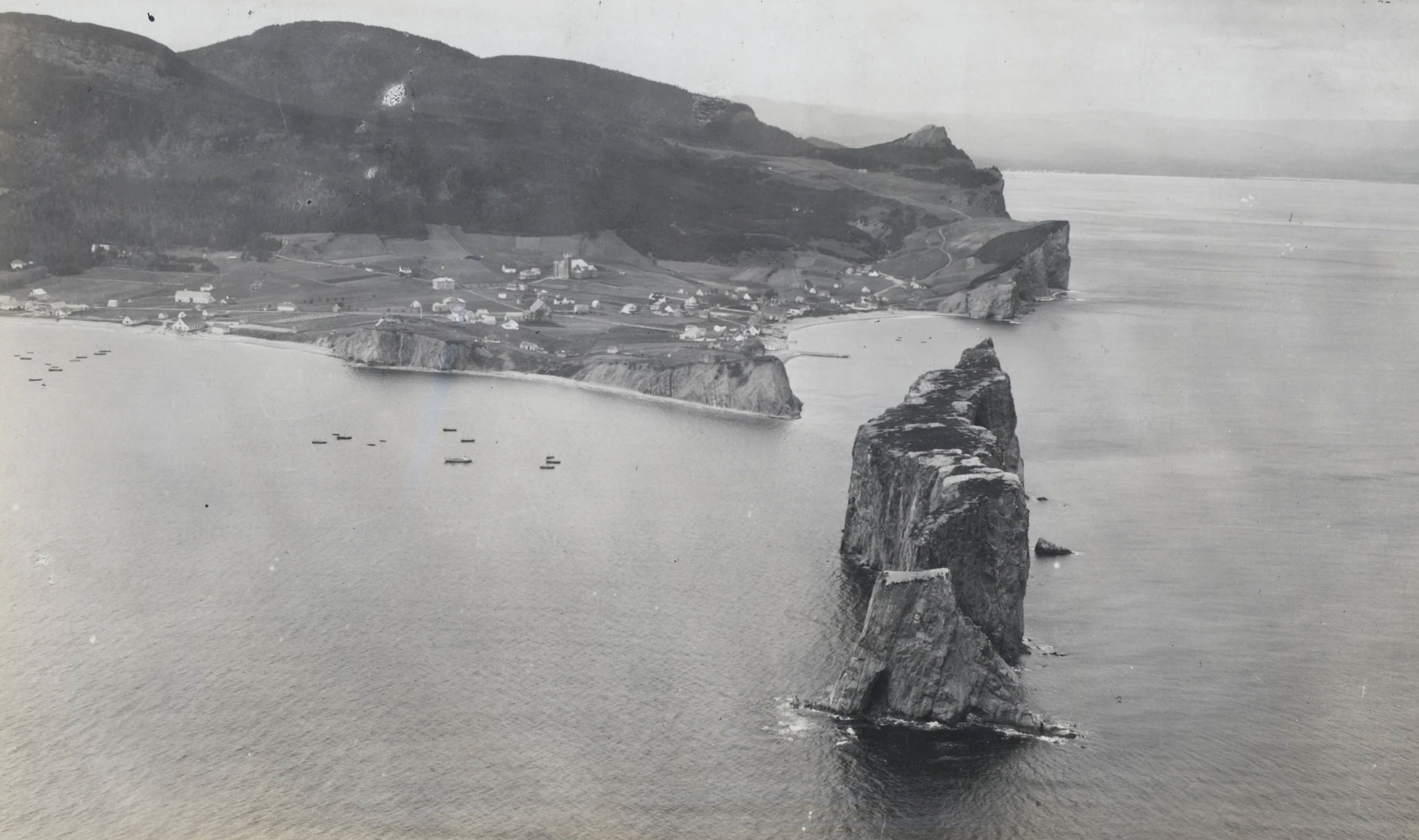
Following the war, in 1919, Henri Balleyguier, a former squadron commander who had fought with de Lesseps, founded the Compagnie Aérienne Française (CAF) and recruited Jacques to fly his plane.
The war had been hard on the de Lesseps couple, so Grace returned to Canada with her young children in 1920. When the CAF company was chosen by Quebec’s Ministry of Forests to map the Gaspe Coast from the air in 1925, Jacques took the job because it would give him the opportunity to be closer to his children.
He became the director of operations and the head pilot for the company. Aerial photography at that time was proving to be the ideal method for mapping terrain and forests in regions with difficult access such as the Gaspe Coast and the Rocky Mountains. Since Jacques’ children were living in Toronto with their mother, they were able to spend their summer vacations with him in Gaspe and accompany him on some of his flights around the Coast. The Ursuline Nuns cared for his children when he was working, and they remembered him as a gentleman and a good father.







However, the new mapping business provoked a negative reaction from the Canadian federal government, which claimed exclusive jurisdiction in aeronautics. Jacques de Lesseps found himself at the center of a constitutional quarrel in which the federal government tried to oppose the Quebec provincial government for having hired a foreign company, to do the work. So, the CAF created a Canadian subsidiary called the Compagnie Aérienne Française-Canadienne (CAFC) which specialized in the emerging field of aerial photography for map making.
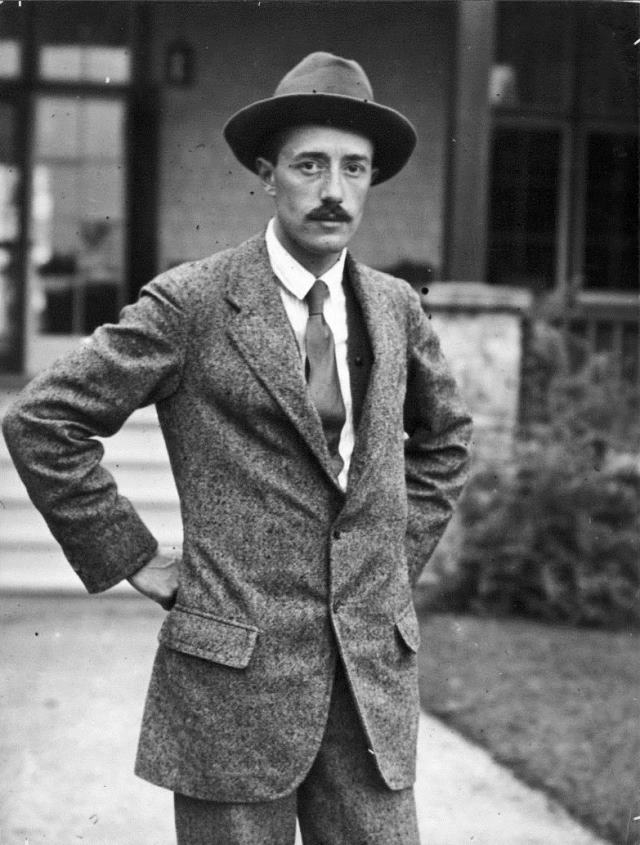
But then the federal government required the company to use pilots of Canadian or British nationality. So, Jacques applied for Canadian citizenship, but the federal government was in no hurry to grant his request. Two of the first Shreck FBA 17 seaplanes were imported from Europe by ship.
Jacques established the main seaplane base in Gaspe in 1926, and a second one in ValBrillant. The head office of the company was located in Quebec City so that they could access the photo studio and the map library of the provincial government. In 1927, two other Shreck FBA 17s and a larger FBA 21 seaplane were added, because they were capable of transporting freight and passengers, to connect Gaspe, Val Brillant, Quebec, and Montreal.

In 1926 and 1927, Jacques photographed the Gaspe Coast often from very low altitudes and he was the first person to see the expansive beauty of the Coast from the air. The Compagnie Aérienne Française-Canadienne produced 1,100 aerial photographs of the Gaspe Peninsula, although there were some of Montreal, Quebec City and the surrounding areas. These photographs constitute the very first aerial photographs of Quebec and several of them were reproduced as postcards in the 1930s.
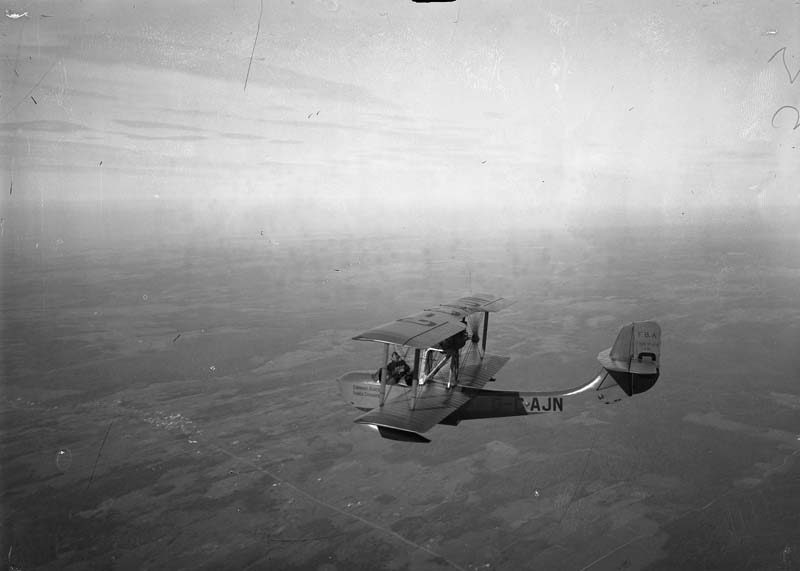


On October 18th, 1927, De Lesseps and his mechanic Theodore Chickenko took off from Gaspe on a routine photography flight over the Gulf of St Lawrence. They were airborne and beyond recall when an urgent call was received in Gaspe to warn them of the impending storm. Despite unfavourable weather conditions, they took off from Gaspe around 1 p.m. aboard the Schreck FBA 21.

A few hours later, the plane was heard above Val-Brillant, but a thick fog prevented them from landing. The locals rang the church bells, and the railway company’s spotlights were pointed towards the sky throughout the night to help them with directions.
The last people to see the plane were in St Felicite, near Matane. They reported that the plane was having difficulty gaining sufficient altitude to rise above the mountains and fly away from the bad weather. They disappeared after that, and no one knows what happened or where their plane went down.
Three days later, the cockpit of the aircraft was found almost intact near Matane, but there was no trace of the pilot or the mechanic. The detached safety straps indicate that the two men probably jumped into the water to try and save themselves. However, at that time of the year, they probably perished in the cold waters of the estuary.

"Veteran Airman Is Missing Part of Jacques de Lesseps’ Ship Found in Gulf.
The Knoxville Journal
Knoxville, Tennessee, October 23, 1927
QUEBEC, Que., Oct. 22 (AP). - "Fears for the safety of Count Jacques de Lesseps, veteran airman, missing with his mechanic since they took off on a survey flight Tuesday, were increased tonight with the finding of parts of his hydroplane in the middle of the Gulf of St. Lawrence.
The main portion of Lesseps’ plane was found on the beach at St. Felicite last night. Other parts were found nearby. Officials of the department of land and fisheries said that a study of the parts revealed that the plane must have been travelling at full speed when it struck the water. The wings and the rudder were stripped off the body and were found some distance away.
There was hope that the two airmen, after having been forced down by the storm which raged after their departure, were able to reach land inaccessible to approach by regular means of communication. Search parties have been sent up the coast of the Gulf of St. Lawrence on the assumption, airplanes also kept a wide lookout along both banks of the St. Lawrence. The two men took off from Gaspe for Val Brilliant. They carried life preservers."
Jacques de Lesseps was the first man to see the Gaspe Coast from the air and became fascinated with the expansive beauty of the peninsula. So, in his will, he requested that he be buried there. The Government of Quebec, and his family, erected a monument in his memory and it was inaugurated in 1932 in the town of Gaspe. This event was in the presence of various public figures and close friends, including the journalist Olivar Asselin to whom Jacques had written this description of the Coast, "You cannot imagine the magnificent and moving spectacle that can be had in the skies of Gaspe. What a marvellous vision also offers the contrast of colours between the vast peninsula and the sea which bathes it: on one side, the velvet green and silky of the forests, artistically draped according to the whim of the mountains and the valleys; on the other, the blue of the sky, united with that of the dazzling gulf under the sun.”

Frank Ellis wrote this about seeing him… “the greatest thrill of my youth in England was the occasion when I encountered the famous French airman Count Jacques de Lesseps. A friend and I were on our way home from a cycling jaunt on the outskirts of Nottingham, near Colwick Park when we heard a hum which quickly grew louder and louder, and suddenly just over the treetops loomed a flying machine, which to our startled eyes seemed enormous. Swiftly circling almost over our heads, it settled gently to landing on one of the great grassy stretches contained within the park area. Excitedly we mounted our bikes and pedalled furiously to where the landing had taken place, arriving breathlessly just as the pilot was climbing out of the cockpit of his blairo monoplane. The minute he pushed up his goggles we recognized him as the famous Count de Lesseps, the hero of a dozen air meets in Europe. He grinned at us, lit a cigarette, and said something in French. We tried our scanty French on him, but he must have thought it was English, so we just grinned all around until the park officials arrived and whisked him away, and also posted guards around his machine.”
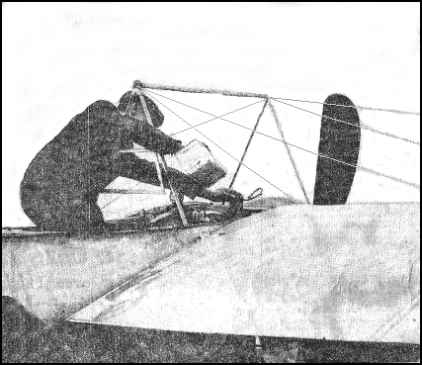
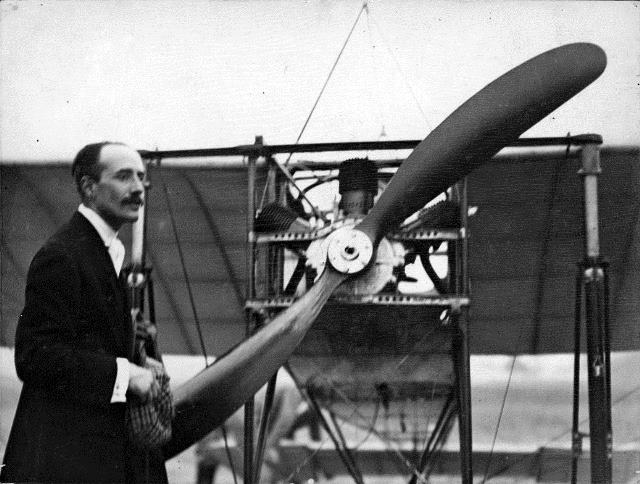
Although Jacques de Lesseps was a well-known celebrity, he enjoyed his time on the Gaspe Coast and took pleasure in getting to know the locals. The late Charles Davis a merchant and at one time a mayor of Gaspe recalled his visits to his office. The owner of the Morin Hotel where he had lived for a while, remembered him as a gentleman. And Perce Hyman of the William Hyman Co. remembered sharing a meal with him in the dining room of the Bakker’s Hotel. He also had a conversation with him on the morning of Jacques’ tragic flight, when he had warned him that the weather conditions might be dangerous because of the mountains.
Count Jacques de Lesseps was a descendant of a family that had been of French nobility from the time of King Louis the 14th and whose members had long distinguished themselves in the service of their country. He followed in their footsteps and lived a life of adventure and dedicated service. His legendary feats and tragic story have become a part of our Gaspesian story.
